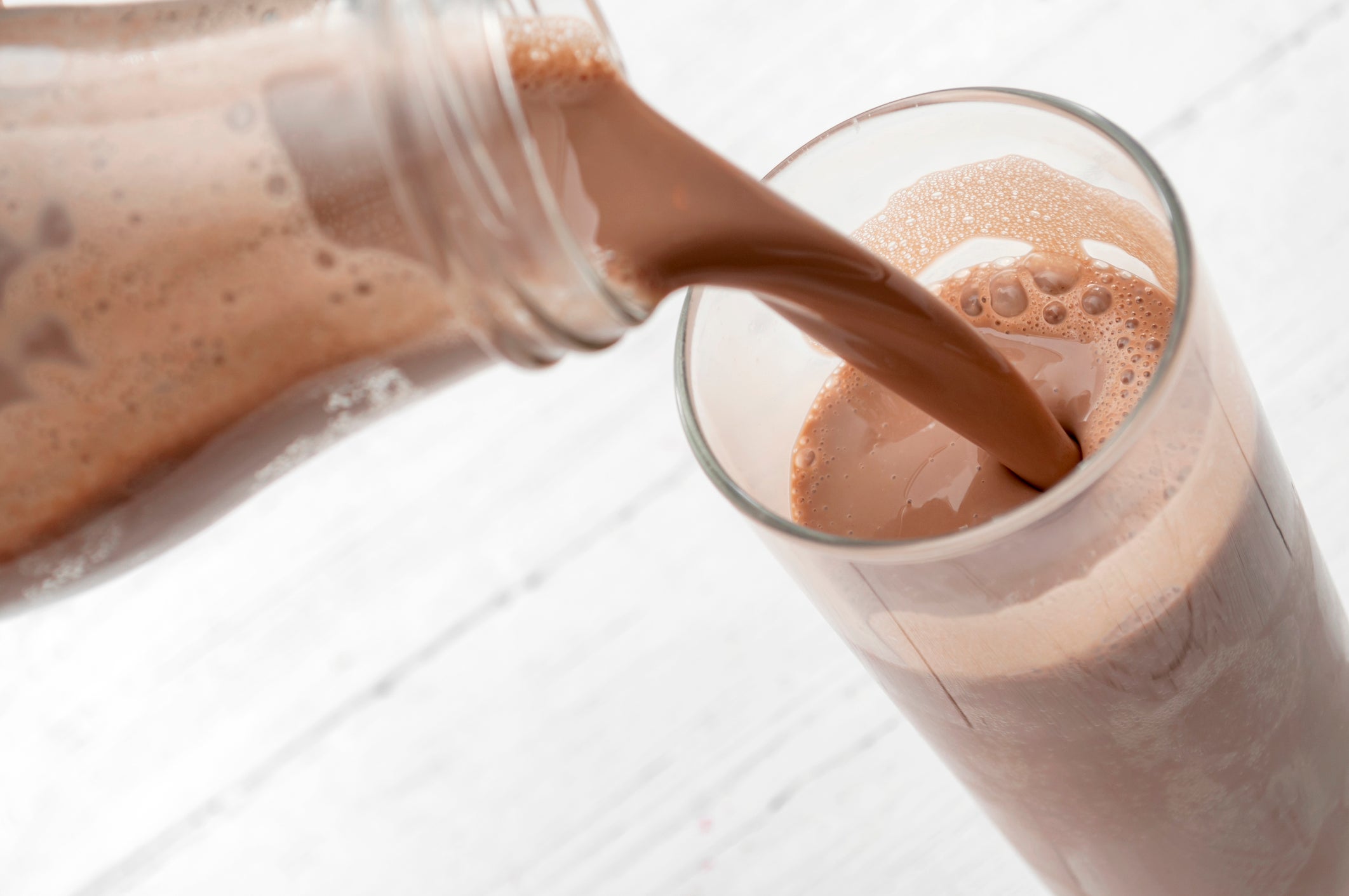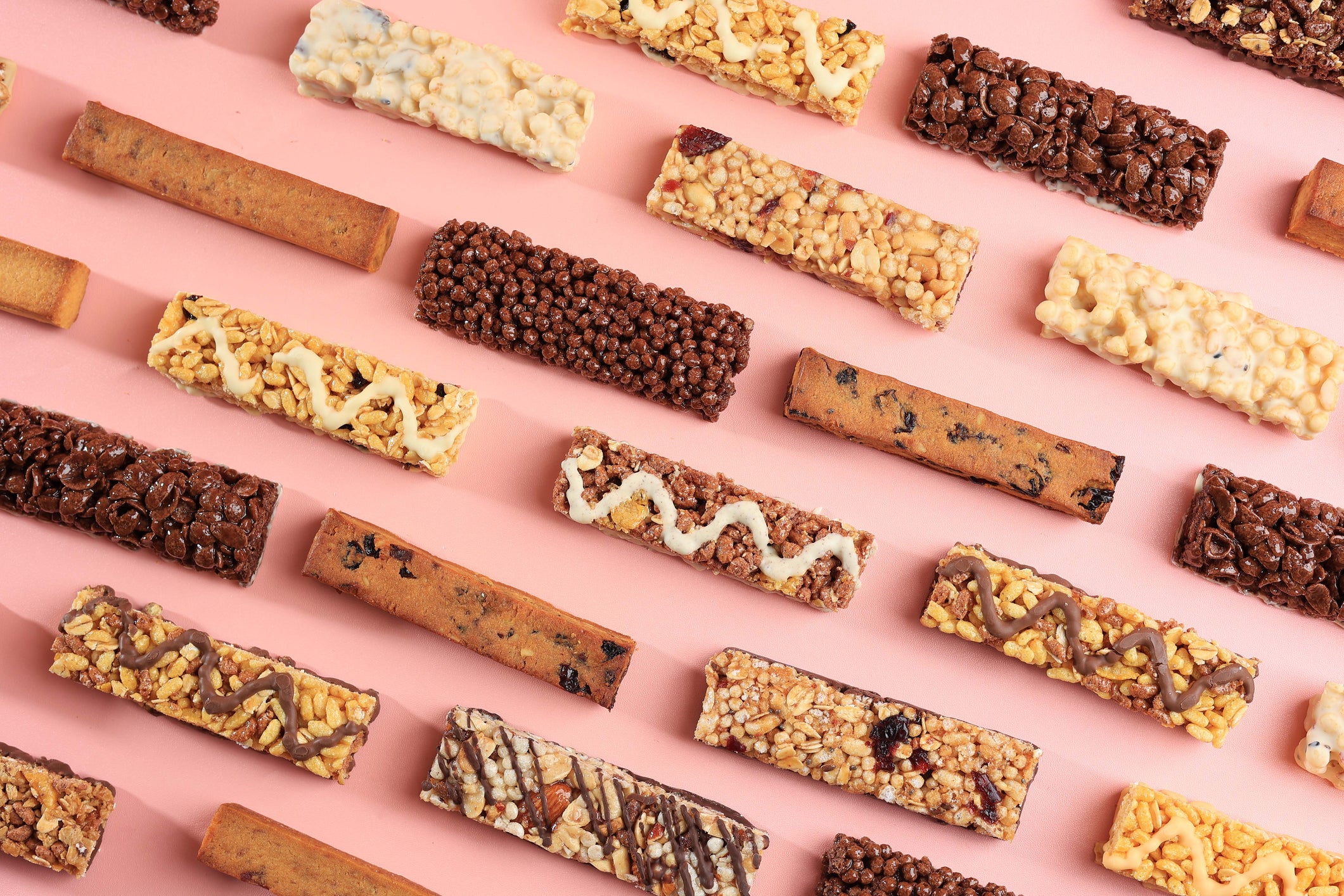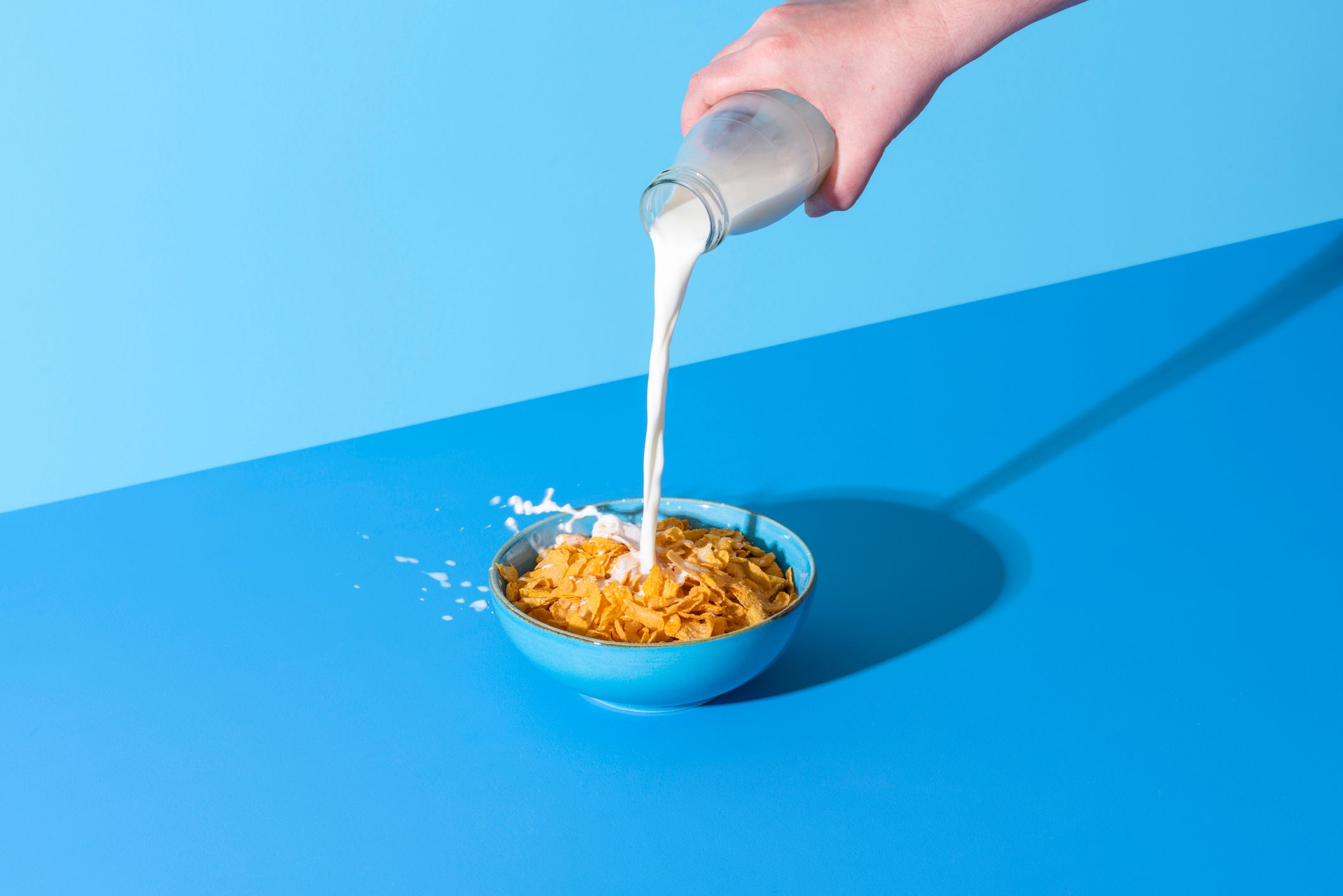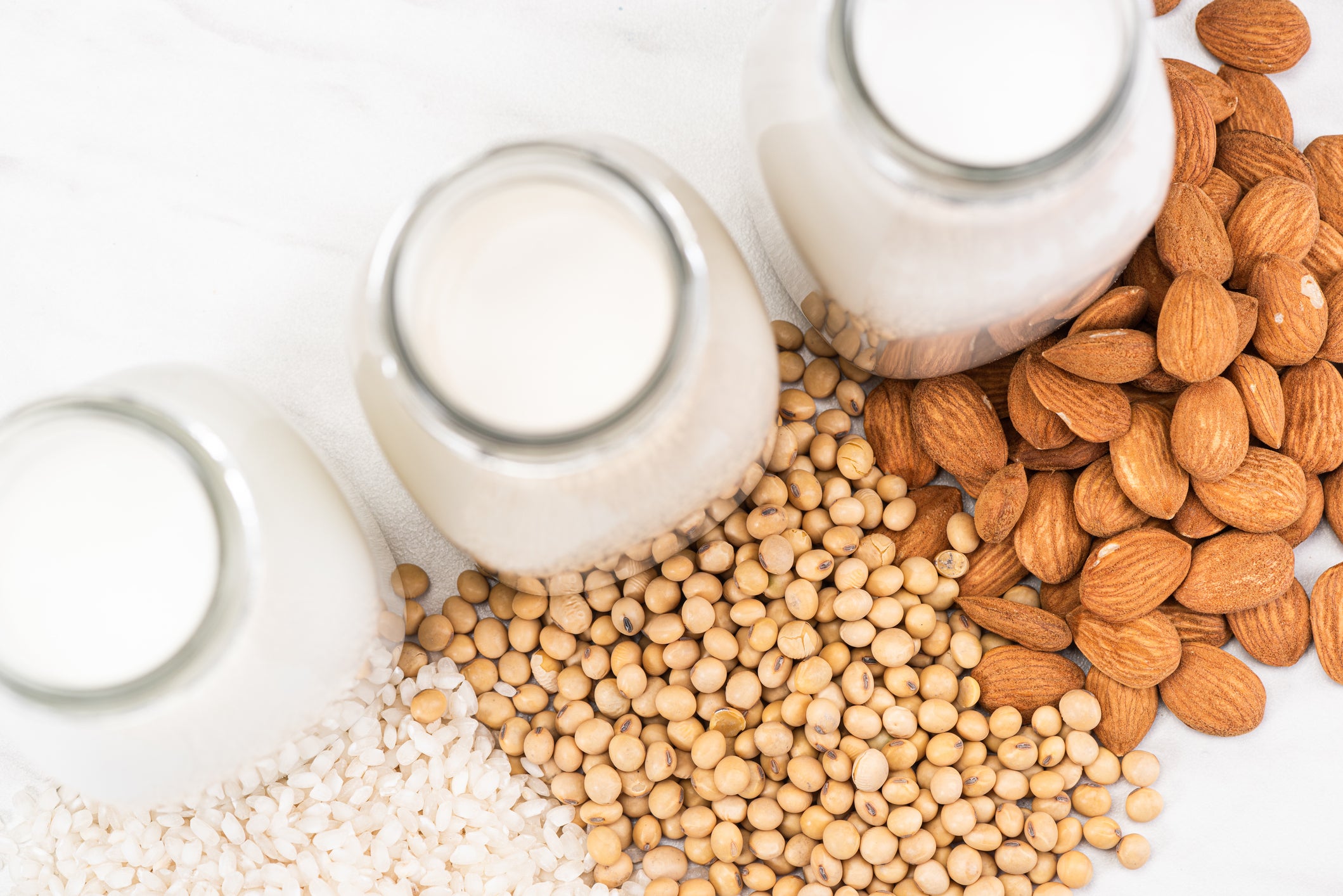From granola bars to green smoothies and oat milk – the hidden sugars lurking in your ‘healthy’ choices
The government’s plan to expand the sugar tax is welcome because products often marketed as diet-friendly, protein-rich or healthy choices can be packed with hidden sugars. Hannah Twiggs looks at how to spot the worst offenders

The government has announced it could extend the sugar tax to include pre-packaged milk-based drinks like bottled milkshakes and iced coffees. It’s a smart move because sugar is hiding in places you wouldn’t expect, and in quantities that would make a Haribo share bag blush.
Many of the foods and drinks we think of as wholesome, virtuous or vaguely good for you are packed with added sugar. Not always under the name “sugar”, of course – food labels are masterclasses in misdirection, with terms like glucose syrup, agave nectar, maltodextrin and concentrated fruit juice doing a lot of heavy lifting.
Some of these products are even marketed as diet-friendly, protein-rich or plant-based. But check the label and you’ll often find they contain as much sugar as the things we’re told to avoid.
And even when brands have “reformulated” products to dodge sugar taxes, the result isn’t always better: sweeteners, emulsifiers and additives are often added instead – the hallmarks of ultra-processed foods, which growing research suggests could harm gut health and drive overconsumption.
Here are just a few of the biggest offenders…
Milkshakes
Milk-based drinks have long flown under the radar when it comes to sugar content, but that’s finally starting to change with the government’s planned expansion of the sugar tax. Take Müller Frijj Chocolate Milkshake (330ml), for example: it contains a staggering 37.6g of sugar – more than the entire NHS recommended daily maximum of 30g for an adult. That’s more sugar than a can of Pepsi (4.55g per 100ml) or Irn-Bru (4.7g per 100ml), which are already subject to the levy.
It’s not just Frijj. A 400ml bottle of Yazoo Banana Milk Drink contains 34.8g of sugar, making it another major offender. These are products you’ll find in corner shops, school lunchboxes and supermarket chillers. They’re often perceived as milky, harmless treats – but in reality, they’re high-sugar desserts in disguise.
Pre-packaged iced coffees
Iced coffees are everywhere now, sold in convenient bottles or cans and often styled to look like low-sugar, grab-and-go caffeine fixes. But these pre-packaged drinks can contain sugar levels more in line with chocolate milkshakes than black coffee. A Starbucks Chocolate Mocha Frappuccino Iced Coffee (250ml), for instance, contains 23.8g of sugar. That’s almost four-fifths of your daily limit in one small drink.

And the Starbucks Caffé Latte Flavoured Milk Iced Coffee (220ml) isn't far behind, with 18g of sugar. Other brands such as Emmi and Costa’s chilled coffee range also hover around 14-20g of sugar per bottle. The packaging might evoke coffee-shop sophistication, but nutritionally, these drinks are closer to a milkshake than a latte. They’re now set to be caught by the expanded sugar tax, and not a moment too soon.
‘Premium’ canned drinks
Sanpellegrino is often perceived as a premium, more refined alternative to mass-market soft drinks. With its retro-chic cans and Italian branding, it’s a staple of delis and upmarket sandwich chains. But Sanpellegrino’s lemonade and orange drinks still pack a sugary punch: the lemonade contains 4.5g of sugar per 100ml, and the orange variant 4.4g per 100ml. That’s only marginally below the original 5g threshold that triggered the sugar tax.
Nestlé, which owns Sanpellegrino, actually reduced the sugar content of these drinks by 40 per cent back in 2018 to avoid the tax, replacing some of the sugar with artificial sweeteners to retain flavour. But with the government now proposing to lower the threshold to 4g per 100ml, even these “reformulated” drinks could soon be taxed – revealing just how close they still are to the line. And while the sugar content may have dropped, these drinks are now arguably even more processed, raising fresh concerns about the long-term impact of ultra-processed foods on our health.
Smoothies and ‘healthy’ juices
Swapping fizzy drinks for smoothies might seem like a smart move, but many bottled smoothies and juices contain alarming amounts of sugar – even if it’s naturally occurring. An Innocent Smoothie, for example, can contain between 20g and 30g of sugar in a single 250ml bottle, depending on the flavour.

Pret’s “Sweet Greens” smoothie (a blend of mango, spinach, avocado, kale, ginger, lemon zest and apple juice) might sound virtuous, but still contains 37g of sugar per serving.
Even “cold-pressed” juices, sold as premium health products, aren’t immune: a 250ml bottle of Coldpress Valencia Orange Juice contains around 20g of sugar. While the sugar is from fruit rather than added syrups, it still affects your blood sugar levels – and drinking it removes the fibre that would normally help regulate absorption.
Granola and cereal bars
Granola bars have long been marketed as the snack of choice for the health-conscious: sporty, wholesome and easy to grab on the go. But beneath the oats and nuts, many are stuck together with sugar syrup, honey or other sweeteners that rack up the sugar count fast. A Nature Valley Crunchy Oats ’n Honey bar, for instance, contains 11g of sugar per two-bar pack. KIND bars often range between 5g and 8g of sugar, while some protein bars like Trek or Fulfil climb higher depending on flavour.
This is a classic example of healthwashing – where marketing emphasises protein content, fibre or “natural ingredients” while quietly delivering a heavy dose of sugar. While they may have less sugar than full-size confectionery, their health credentials are often overstated, especially if consumed daily.
‘Healthy’ breakfast cereals
Breakfast cereals have long been a minefield of hidden sugars, even among brands marketed as healthy. Kellogg’s Crunchy Nut Cornflakes contain 35g of sugar per 100g – meaning a modest 30g serving delivers over 10g of sugar before you’ve even added milk.

Even granola, often perceived as the “wholesome” option, can be just as sugary. Jordan’s Crunchy Oat Granola contains around 20g of sugar per 100g, and supermarket honey granolas often creep even higher.
Low-fat and flavoured yoghurts
Yoghurt is widely seen as a healthy choice, packed with calcium and live cultures. But many low-fat and flavoured yoghurts are packed with added sugar to make up for the fat that’s been removed. A 160g pot of fruit-flavoured Müller Light can contain around 12g of sugar. Onken’s fruit yoghurts and supermarket own-brands are similar, with pots often reaching 13-15g of sugar per 100g.
Children’s yoghurts like Petits Filous and Wildlife Choobs can also pack a sugary punch, especially given their smaller portion sizes – making them proportionally very sweet. And because yoghurt retains a “health halo”, many consumers assume they’re making a smart choice when they’re actually consuming what amounts to a dessert.
Plant-based milks
Oat and almond milks have become the go-to alternatives for dairy-free diets, beloved by vegans and lactose-intolerant coffee drinkers alike. But unless you opt for unsweetened versions, many of these plant-based milks are spiked with added sugars to enhance flavour and mouthfeel.

Oatly’s Barista Edition oat milk contains around 3.5g of sugar per 100ml. Almond Breeze’s Original variant contains 2.5g per 100ml. These numbers sound modest until you realise how much is used in a typical latte or bowl of cereal. And unlike traditional milk, the sugar isn’t naturally occurring; it’s often added during production.
Processed breads
Bread might not seem like a sugar trap, but many supermarket loaves and artisan-style options like focaccia or panini bread contain more sugar than you’d expect. Kingsmill 50/50 sliced bread contains around 3.5g of sugar per 100g. Waitrose’s rosemary and sea salt focaccia comes in at about 5.2g per 100g, while their pre-packed brioche burger buns can exceed 6g per 100g.
That’s because sugar plays a functional role in bread-making: it feeds the yeast, aids browning and extends shelf life. But it also means that your sandwich or toast can deliver a sugar hit that adds up over the course of a day – especially if you’re pairing it with jam, sauces or sweetened spreads.
What this tells us
The problem isn’t just the sugar we know about – it’s the sugar we don’t. It’s embedded in the products that sit quietly in our cupboards and fridges, often masquerading as healthy or at least better for you. And while the sugar tax might nudge manufacturers to reduce content in certain drinks, it doesn’t begin to touch the wider issue of hidden sugars across our entire food system.
Labelling doesn’t help much either. Most people don’t know how to differentiate between natural sugars (like those in fruit) and added sugars. Nor do labels make it easy to see the total impact of what you’re eating across a day. It’s not uncommon for breakfast smoothies, cereal bars and yoghurt to clock up over 50g of sugar before lunch.
What needs to change
If the government is serious about tackling obesity and improving the nation’s health, it has to go beyond taxing a few fizzy drinks and milkshakes. We need clearer labelling, particularly on added sugars. We need tighter controls on marketing products as healthy when they’re anything but. And most importantly, we need to educate consumers about what’s really in their food.
Sugar isn’t just in the sweets and treats – it’s in the bread, the sauce, the yoghurt, the milk. It’s everywhere. And if we want to cut back, we first need to know where it’s hiding.



Join our commenting forum
Join thought-provoking conversations, follow other Independent readers and see their replies
Comments